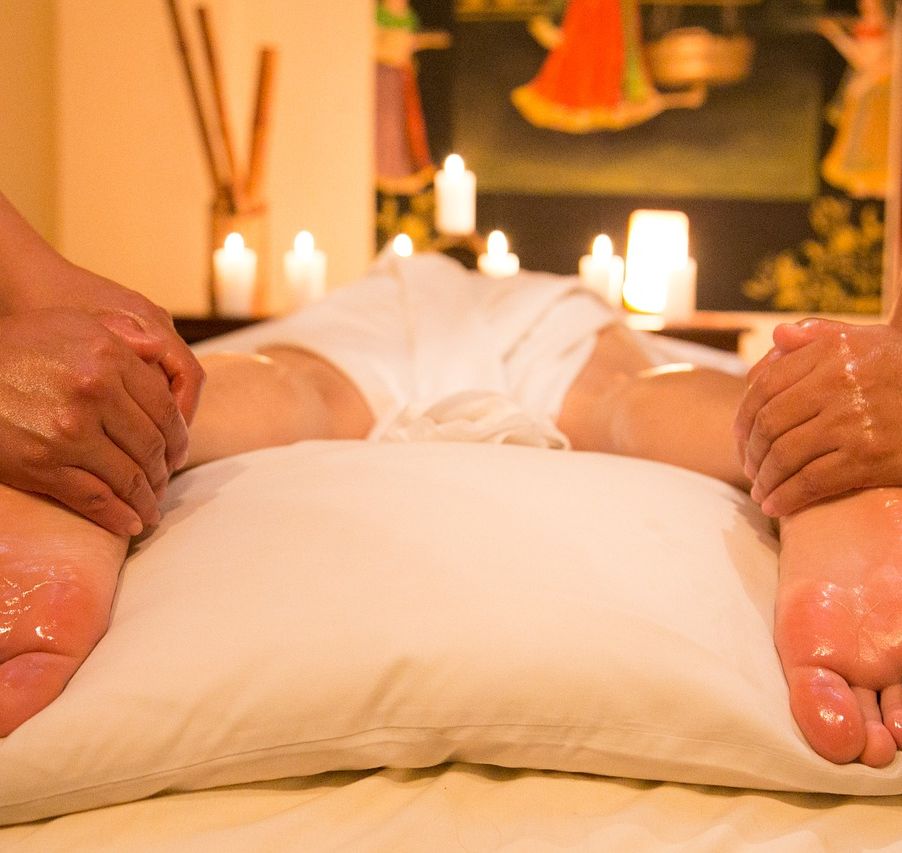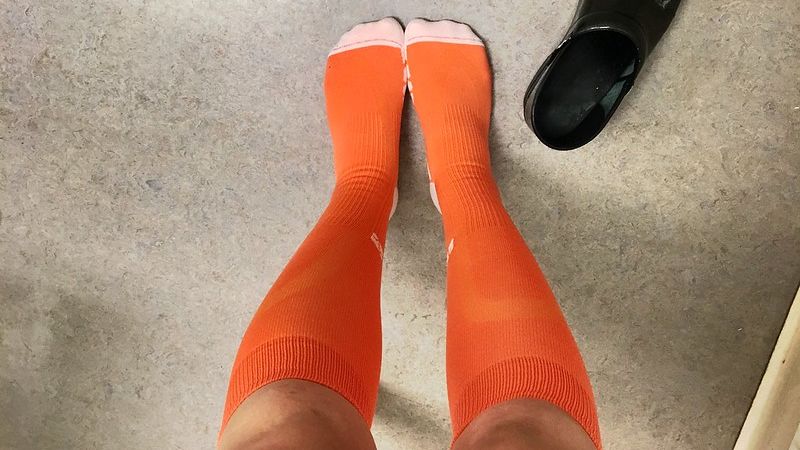Swelling

Swelling is a symptom experienced by almost all pregnant women at least once prior to delivery.
Pregnancy causes many changes in the body that favor the development of swelling, especially in the lower body. This occurs mostly due to hormones, blood volume expansion, decrease in blood pressure, and the growing uterus.
By itself, swelling is not dangerous, but women should be aware of additional signs and symptoms that could indicate the type of swelling experienced is a possible sign of a more serious condition.
Women can engage in certain lifestyle modifications to prevent and improve swelling, such as regular physical exercise (even walking), avoidance of standing and/or sitting for long periods, resting on their left sides occasionally, and staying properly hydrated.
Women should participate in lifestyle modifications that can reduce symptoms, monitor their health (weight, blood pressure), and call their HCP if they notice any possible warning signs described below.
Background
Swelling (edema) is considered one of the most common findings in pregnancy, affecting up to 80% of women at some point.
Swelling is most common in the third trimester as more and more fluid collects in the tissues of the lower body due to the growing uterus; swelling can also occur in the groin, arms, and hands.
Mild swelling, by itself, is not dangerous, but women should take steps to alleviate it and have general awareness of other signs and/or symptoms that could indicate the swelling is a sign of a more serious condition.

Causes
Swelling occurs when extra fluid leaks into tissues from the circulatory and lymphatic system, after its reserve capacity is exceeded. Massage and other forms of manual lymphatic drainage are effective because the movement forces the fluid back into the lymphatic system to be drained.
Many changes that occur during pregnancy favor the development of swelling:
The hormones aldosterone and cortisol are released by the adrenal glands (responsible for salt/fluid balance) during pregnancy and can cause women to retain fluid, which is necessary starting in the first trimester.
Further, early changes in the kidneys lead to increased urination which then leads to greater thirst. Increased fluid intake (i.e. drinking water) reduces sodium levels in the blood, so the body begins to retain sodium – leading to further retention of fluid. The body retains an extra 6 to 8 liters worth of fluid during pregnancy.
This extra fluid is also need for blood volume expansion to aid in fetal growth and the prevention of blood loss during delivery. Blood volume, mostly plasma, increases gradually from 6 to 20 weeks of pregnancy and reaches a maximum volume around 32 to 34 weeks.

The most common cause of fluid in the lower legs, ankles, and feet is due to the slow blood flow back to the heart from the lower body. Early in pregnancy, the decrease in blood pressure plus the increase in blood volume puts a lot of pressure on the lower veins (and causes varicose veins in the process).
As pregnancy progresses, the growing weight of the uterus puts additional pressure on the inferior vena cava (vein from the pelvis to the heart), slowing fluid circulation even further, causing fluid to buildup in both legs (lying down on the left side reduces this pressure).
A lack of physical activity can also cause swelling in pregnancy as exercise helps the body circulate blood and fluid out of the tissues and back into the lymphatic system and kidneys to be filtered and drained (sweating may attempt to do the same thing).
Based on the factors above, swelling frequently occurs after a woman sits and/or stands for a long period such as a flight, car trip, or at her place of employment. This stalls circulation, allowing blood and fluid to pool in the lower body.
Complications
Swelling can occur in the legs, ankles, feet, arms, hands, and face, is considered temporary, may come and go, and does not require treatment. However, swelling is often the first sign of more serious conditions, and this can cause women a lot of stress in an attempt to recognize the difference.
Swelling can be a sign of preeclampsia when accompanied with high blood pressure and/or headache, dehydration, vision changes, sudden weight gain, and protein in the urine (dipstick at HCP’s office).
Swelling associated with preeclampsia is usually sudden and mostly presents in the face and hands, not just the legs. Facial swelling indicates severe swelling and is more a “flag” than swelling in the lower part of the body.

Deep vein thrombosis (DVT) also presents with swelling. DVT, a blood clot in the lower body (pelvis, groin, legs), is not very common in pregnancy, but suspected DVT is, due to the overall commonness of swelling. However:
Swelling with DVT develops quickly (hours to days), usually involves only the left leg – but not always – and may also include warmth, redness, and/or pain. Women should call their HCP immediately if they suspect they may have a blood clot.
Action
The best action women can take is to participate in lifestyle modifications that can reduce symptoms, monitor their health (weight, blood pressure), and call their HCP if they notice any possible warning signs.
Women to need to call their HCP immediately if they notice the following:
Skin ulcers, open sores, or rashes near varicose veins
Major swelling in one leg
Reddened veins that feel warm/painful
Bleeding from or near varicose veins
A skin rash near to varicose veins
Sudden weight gain
High blood pressure
Shortness of breath
Lying on the left side moves the uterus off the inferior vena cava and can temporarily relieve swelling by helping fluid circulate throughout the body.
Women should stay properly hydrated, avoid tight clothing (i.e. pants), rest frequently with the legs elevated, avoid sitting and standing for long periods, and remain physically active as much as possible, which are the best methods for the avoidance of swelling.
By United States law, women are afforded reasonable accommodations while pregnant. If a woman is required to sit or stand for long periods at her place of employment and she is pregnant, she can ask her employer to make accommodations.
Massage is very effective for the temporary relief of swelling.
Compression stockings can help reduce swelling. HCPs can recommend different grades of compression and women should talk to their HCP if they are interested in this method. (Note: There are many different types of compression stockings now available that look like fashionable socks.)

Reflexology (pressure points), water immersion, and/or swimming and aquatic exercise may help improve swelling in the lower body.
Limiting salt intake is likely not necessary, as the fluid/salt balance of pregnant women is much different than non-pregnant women. Read more.
Women should consider reading the below pages for an expanded knowledge and broader understanding of swelling during pregnancy:
Blood Volume (Total Body Water)
Cardiac Output (Veins)
Women should also consider sharing and submitting their experience below regarding swelling during pregnancy. This can help other women learn additional perspectives regarding this concern and how to potentially manage symptoms.
Resources
Causes and signs of [general] edema (InformedHealth.org)